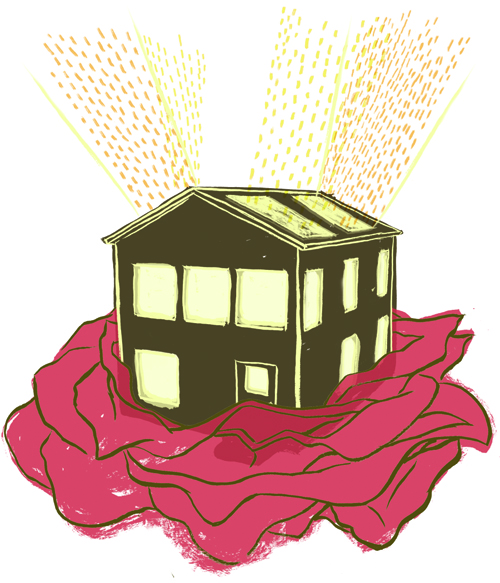 by Ann Cohen
by Ann Cohen
With tax abatements and breaks galore, 2010 is a great year to move into an energy-efficient home. It was a little bit different 30 years ago, when I built the first passive solar house in Philadelphia.
If you weren’t around in 1980, let me give you a short history lesson: We had survived two energy crises and a recession sparked by the Arab oil embargos of 1973 and 1979. We waited in line at the gas station on the days we could buy gas. We had 10 months of Daylight Savings Time. The speed limit was 55 mph. Our national leaders called on everyone to do their part to conserve. People were turning out their lights and putting on sweaters.
It wasn’t the ideal time, but I wanted a house. I found a neighborhood in Roxborough that I loved, a house I really liked—and was promptly outbid. My father convinced me to buy a lot. We’d build a house. That put me on my not-so-passive path to a solar house.
I was a blue-collar city worker with an interest in ecology. I knew I wouldn’t have a lot of money for a mortgage and utilities after I bought my lot, so off I went to the AIA, looking for architects to interview. Only one, Philadelphian Walter Wyckoff, told me that I could build an energy-efficient house for $30 a square foot—if I built it myself. He also assured me that I would have to go with a passive solar system, converting sunlight into heat. An active system—converting sunlight into electricity—would be too expensive.
I went to a solar conference and read everything I could find about house building. Walter designed the house and acted as general contractor. In the meantime, my father assembled the old guys to help me build it. Sited to the south, with a wall of double-pane windows, the house had a brick floor built over 35 tons of crushed stone and an exposed chimney to store thermal energy. It had six inches of wall insulation and 12 in the ceiling.
I ordered the latest in insulated shades. We installed fluorescent lights throughout the house behind wood valances. I went to PECO and asked if there were any benefits for using fluorescent lights. They were very nice—even if they did look at me like I had three heads. In any case, there was no benefit.
Then I called PGW and asked if they were installing new service. “What kind of house are you building?” they asked. I explained that it was a solar house and very energy-efficient. “SOOOL-LAAAR?” asked the PGW employee. “Yes, I’ll just need gas for cooking and backup heat,” I explained.
After several days, I was advised that I could have gas installed, but would need to submit heat loss calculations and sign a release regarding the size of the heater, which PGW argued was too small. Then came the real kicker: “Where do you want your gas meter?” the PGW rep asked. I told him that I wanted it in the utility room at the rear of the house. “Ma’am, you can’t afford to have your meter in the utility room,” he replied, explaining that I would have to pay for each foot of gas line they installed. “We are a profit-making utility company and we don’t see how we can make any money from your sol-lar house.” I offered to open the windows during the winter, but they wouldn’t back down. They billed me for every foot of gas pipe they ran from the street to the front of the house, where they installed the gas meter in the living room.
The heater was plenty big. My gas bill was delightfully low. I enjoyed my sunny, sustainable house for 16 years, until my family outgrew it. I built a new house two blocks away. It also faces south and has a solar green house. Recently, I’ve been eyeing the roof, thinking about finally installing some of those active solar panels. Maybe I’ll even get a tax break.








Ann,
Your solar home sounds really exciting. You were way ahead of your time!!